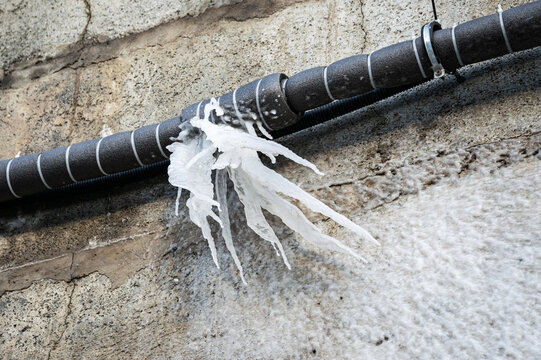Preventing Frozen Plumbing in Winter: Professional Strategies
Preventing Frozen Plumbing in Winter: Professional Strategies
Blog Article
This post underneath about Winter Plumbing Precautions: Preventing Frozen Pipes is pretty much stimulating. Read on and make your own personal conclusions.

Cold weather can damage your plumbing, especially by freezing pipes. Here's how to prevent it from taking place and what to do if it does.
Introduction
As temperatures drop, the threat of frozen pipelines boosts, potentially leading to pricey repair work and water damages. Comprehending just how to prevent icy pipes is critical for property owners in cool climates.
Recognizing Icy Pipes
What causes pipelines to freeze?
Pipes freeze when subjected to temperature levels listed below 32 ° F (0 ° C) for expanded periods. As water inside the pipes freezes, it expands, taxing the pipeline walls and potentially causing them to burst.
Threats and problems
Frozen pipes can lead to water supply disturbances, home damage, and expensive fixings. Ruptured pipes can flooding homes and trigger extensive architectural damage.
Signs of Frozen Pipeline
Identifying frozen pipes early can stop them from rupturing.
How to recognize frozen pipelines
Try to find lowered water circulation from faucets, uncommon smells or noises from pipelines, and visible frost on revealed pipes.
Prevention Tips
Insulating at risk pipes
Wrap pipes in insulation sleeves or use warm tape to shield them from freezing temperature levels. Focus on pipes in unheated or exterior areas of the home.
Heating methods
Keep indoor areas properly heated, especially areas with plumbing. Open cupboard doors to allow warm air to circulate around pipelines under sinks.
Shielding Outside Pipes
Garden hoses and exterior taps
Disconnect and drain garden hoses prior to wintertime. Set up frost-proof spigots or cover outdoor taps with insulated caps.
What to Do If Your Pipelines Freeze
Immediate actions to take
If you think frozen pipelines, maintain taps open up to soothe stress as the ice thaws. Use a hairdryer or towels taken in hot water to thaw pipelines slowly.
Long-Term Solutions
Architectural changes
Consider rerouting pipes far from outside wall surfaces or unheated locations. Include extra insulation to attics, basements, and crawl spaces.
Upgrading insulation
Purchase premium insulation for pipelines, attic rooms, and walls. Appropriate insulation aids keep consistent temperatures and reduces the risk of frozen pipes.
Verdict
Stopping icy pipes requires aggressive actions and fast reactions. By comprehending the causes, indicators, and safety nets, property owners can protect their pipes during cold weather.
5 Ways to Prevent Frozen Pipes
Drain Outdoor Faucets and Disconnect Hoses
First, close the shut-off valve that controls the flow of water in the pipe to your outdoor faucet. Then, head outside to disconnect and drain your hose and open the outdoor faucet to allow the water to completely drain out of the line. Turn off the faucet when done. Finally, head back to the shut-off valve and drain the remaining water inside the pipe into a bucket or container. Additionally, if you have a home irrigation system, you should consider hiring an expert to clear the system of water each year.
Insulate Pipes
One of the best and most cost-effective methods for preventing frozen water pipes is to wrap your pipes with insulation. This is especially important for areas in your home that aren’t exposed to heat, such as an attic. We suggest using foam sleeves, which can typically be found at your local hardware store.
Keep Heat Running at 65
Your pipes are located inside your walls, and the temperature there is much colder than the rest of the house. To prevent your pipes from freezing, The Insurance Information Institute suggests that you keep your home heated to at least 65 degrees, even when traveling. You may want to invest in smart devices that can keep an eye on the temperature in your home while you’re away.
Leave Water Dripping
Moving water — even a small trickle — can prevent ice from forming inside your pipes. When freezing temps are imminent, start a drip of water from all faucets that serve exposed pipes. Leaving a few faucets running will also help relieve pressure inside the pipes and help prevent a rupture if the water inside freezes.
Open Cupboard Doors
Warm your kitchen and bathroom pipes by opening cupboards and vanities. You should also leave your interior doors ajar to help warm air circulate evenly throughout your home.

I was shown that report on How to prepare your home plumbing for winter weather from a pal on a different site. Make sure you take the opportunity to distribute this post if you appreciated it. Thank you for being here. Revisit us soon.
Call Today Report this page